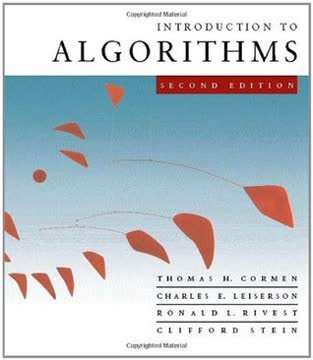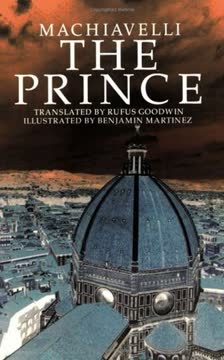つの重要なポイント
1. 自分と敵を知り、勝利を得る
「敵を知り己を知れば、百戦危うからず。」
自己認識が最も重要です。 自分の強み、弱み、能力を理解することは、効果的な戦略の基盤です。この知識により、情報に基づいた意思決定が可能となり、無理を避けることができます。同様に重要なのは、敵を知ることです。敵の戦術、動機、資源を理解することで、敵の動きを予測し、対策を立てることができます。
実践的な応用:
- 自軍の定期的な自己評価を行う
- 敵の能力に関する情報収集に投資する
- 敵が自軍について知らない情報のギャップを特定し、活用する
- 両者の理解を継続的に更新し、精緻化する
2. 状況の変化に応じて戦略を適応させる
「水は一定の形を持たず、戦争においても一定の状況はない。」
柔軟性が鍵です。 戦場は動的であり、事前に設定された計画に固執すると災難を招くことがあります。成功する指揮官は、新しい状況を迅速に評価し、それに応じて戦略を調整する能力を持っています。この適応力により、予期しない機会を捉え、予期せぬ挑戦を軽減することができます。
適応力の実践:
- 複数の緊急時対応計画を策定する
- 部隊を多才で多技能に訓練する
- すべてのレベルで自主性と意思決定を奨励する
- 様々なシナリオに適応するための戦争ゲームを定期的に実施する
3. 欺瞞と誤導で優位を得る
「戦争はすべて欺瞞に基づく。」
心理戦が重要です。 敵に対して意図、強さ、位置を誤認させることで、決定的な行動の機会を作り出すことができます。欺瞞は、偽情報から偽の退却や進軍まで、多くの形を取ります。目標は、敵の認識と意思決定プロセスを操作し、自軍に有利な状況を作り出すことです。
欺瞞戦術:
- 複数のチャネルを通じて偽情報を広める
- カモフラージュと隠蔽を使用して部隊の動きを隠す
- 主要な目標から注意を引くために陽動攻撃を行う
- 二重スパイや偽の脱走者を利用する
4. 敵の弱点を突き、強みを避ける
「敵が準備していないところを攻撃し、予期されていないところに現れる。」
戦略的なターゲティングが重要です。 敵の最も強いところで正面から対決するのではなく、防御や戦略の脆弱性を見つけ出します。これらの弱点に焦点を当てることで、最小限の損失で勝利を収めることができます。同時に、自軍の弱点を保護し、敵の攻撃から隠すことが重要です。
実践的な応用:
- 敵の脆弱性を特定するために徹底的な偵察を行う
- 特定の弱点を突くための専門部隊を開発する
- 敵の計画を妨害するために迅速かつターゲットを絞った攻撃を行う
- 自軍の弱点を強化し、隠す
5. 地形と環境を利用する
「国の自然の形成は兵士の最良の味方である。」
地理が戦略を形作る。 地形や環境条件を理解し、利用することで、戦術的な優位性を得ることができます。これには、自然の特徴をカバーとして使用したり、天候条件を利用したり、戦場を操作して自軍に有利な状況を作り出すことが含まれます。環境をマスターすることで、敵を自軍の条件で戦わせることができます。
環境戦術:
- 様々な地形や気候で部隊を訓練する
- 異なる環境に対応するための専門装備を開発する
- 自然の障害物を利用して敵の動きを制限する
- 有利な天候条件に合わせて作戦を実行する
6. 軍事的成功にはリーダーシップが重要
「名誉を求めずに進み、恥を恐れずに退く将軍は、国を守り、君主に良い奉仕をすることだけを考える。彼は王国の宝である。」
効果的なリーダーシップは人々を鼓舞する。 熟練した指揮官は、勇気、知恵、誠実さを示し、模範を示す必要があります。彼らは部隊のニーズと任務の要求をバランスさせ、プレッシャーの中で難しい決断を下す必要があります。良いリーダーシップは、忠誠心、規律、士気を高めます。
リーダーシップの原則:
- 前線で指揮を執り、部隊と共に苦難を共有する
- 明確かつ決断力のあるコミュニケーションを行う
- 功績を称え、不正行為を公正に対処する
- 部隊の福祉と士気を最優先に考える
7. 部隊の規律と統一を維持する
「兵士を自分の子供のように扱えば、彼らは最も深い谷にもついてくる。自分の愛する息子のように見なせば、彼らは死ぬまであなたを支える。」
結束は力を増幅する。 規律と統一の取れた部隊は、より大きくても組織化されていない部隊よりもはるかに効果的です。部隊間の友情と共通の目的意識を育むことで、戦闘精神と全体的な効果が向上します。規律は、混乱した戦場の状況でも命令が正確に実行されることを保証します。
統一を築く:
- 厳格な訓練プログラムを実施する
- 明確な行動規範を確立し、一貫して施行する
- チームビルディング活動や共有体験を促進する
- 部隊の成果を認識し、祝う
8. 情報収集は勝利のために不可欠
「秘密作戦は戦争において不可欠であり、軍隊はそれに依存してすべての動きを行う。」
情報は力です。 正確でタイムリーな情報は、勝利と敗北の違いを生むことがあります。これは、敵に関する情報だけでなく、地形、天候条件、政治的要因に関する情報も含まれます。情報に精通した指揮官は、より良い意思決定を行い、敵の行動を予測することができます。
情報戦略:
- 信頼できる情報提供者のネットワークを構築する
- 先進的な監視および偵察技術を利用する
- 情報収集と分析に特化した部隊を訓練する
- 機密情報を保護するための安全な通信システムを実装する
9. 戦争におけるタイミングと勢いが重要
「決断の質は、獲物を打ち破るためにタイミングよく急降下する鷹のようなものである。」
主導権を握る。 いつ行動するかを知ることは、どのように行動するかを知ることと同じくらい重要です。適切なタイミングで攻撃することで、部隊の効果を倍増させ、敵を不意打ちにすることができます。一度勢いを得たら、敵が再編成したり反撃したりするのを防ぐために、それを維持する必要があります。
タイミング戦術:
- 迅速対応能力を開発する
- 指揮官に機会を認識し、活用する訓練を行う
- 陽動戦術を使用して決定的な行動のための隙間を作る
- 持続的な作戦を支えるための物流システムを実装する
10. 資源を節約し、長期戦を避ける
「長期戦争から利益を得た国の例はない。」
効率が重要です。 長期戦は資源、士気、そして国民の支持を消耗します。目標は迅速かつ決定的に達成し、人的および物的コストを最小限に抑えることです。これには、慎重な計画、資源の効率的な使用、明確な出口戦略が必要です。
資源管理:
- 紛争を迅速に終結させる高価値の目標を優先する
- 付随的被害を最小限に抑えるための精密兵器と戦術を開発する
- 効率的なサプライチェーンと物流システムを実装する
- 長期戦を防ぐために軍事作戦と並行して外交的解決策を促進する
最終更新日:
FAQ
What's The Complete Art of War about?
- Military Strategy Focus: The Complete Art of War combines the teachings of Sun Tzu and Sun Pin, focusing on military strategy and tactics. It emphasizes understanding warfare as a critical affair of state.
- Broader Applications: The principles extend beyond military applications, influencing business, personal development, and conflict resolution.
- Historical Context: Provides insights into ancient Chinese warfare, detailing political and social dynamics during the Spring and Autumn and Warring States periods.
Why should I read The Complete Art of War?
- Timeless Wisdom: Offers enduring insights on strategy, leadership, and decision-making applicable in modern contexts.
- Comprehensive Insights: Enhances understanding of military tactics, including terrain, deception, and psychological warfare.
- Cultural Significance: Provides insight into Chinese culture and philosophy, enriching perspectives on Eastern thought.
What are the key takeaways of The Complete Art of War?
- Importance of Preparation: Emphasizes thorough preparation and analysis before engaging in conflict.
- Deception as Strategy: Highlights the need to manipulate the enemy’s perceptions for strategic advantage.
- Understanding Terrain: Advises on the strategic implications of different types of terrain.
What are the best quotes from The Complete Art of War and what do they mean?
- “One who knows the enemy...”: Stresses the importance of self-awareness and understanding the opponent for victory.
- “The highest realization of warfare...”: Advocates for undermining the enemy’s strategy rather than direct combat.
- “Warfare is the Tao of deception.”: Encapsulates the necessity of deceit in warfare to create opportunities for victory.
How does The Complete Art of War apply to modern business practices?
- Strategic Planning: Principles of preparation and analysis can be applied to business planning and competitive strategy.
- Deception in Marketing: Businesses can use strategic marketing to create favorable perceptions and mislead competitors.
- Leadership and Team Dynamics: Insights on managing team morale are relevant in modern organizational leadership.
What are the main concepts in The Complete Art of War?
- Five Factors of Warfare: Evaluates military situations through Tao, Heaven, Earth, generals, and laws.
- Types of Terrain: Categorizes terrain into types like accessible and fatal, each requiring different strategies.
- Psychological Warfare: Emphasizes morale and manipulating the enemy’s emotions.
How does The Complete Art of War address the concept of leadership?
- Qualities of a Good Leader: Emphasizes wisdom, credibility, benevolence, courage, and strictness.
- Independence in Command: Advocates for leaders to have autonomy in decision-making.
- Emotional Connection: Suggests treating troops as family to foster loyalty and commitment.
What role does deception play in The Complete Art of War?
- Core Principle: Deception is fundamental, with warfare described as the Tao of deception.
- Manipulating Perceptions: Advises creating false appearances to confuse the enemy.
- Psychological Advantage: Deception affects the enemy’s morale and confidence, inducing fear and hesitation.
How does The Complete Art of War define victory?
- Strategic Advantage: Victory is achieving strategic objectives with minimal conflict.
- Preparation and Timing: Emphasizes understanding when to engage and when to avoid conflict.
- Unity of Purpose: Links victory to troop unity and alignment with the commander’s objectives.
What are the different types of spies mentioned in The Complete Art of War?
- Local Spies: Provide intelligence about the enemy’s movements and plans from the local area.
- Internal Spies: Employed within the enemy’s ranks to understand their strategies and weaknesses.
- Double Agents: Provide misleading information to the enemy while relaying accurate intelligence back.
How does The Complete Art of War suggest handling superior forces?
- Divide and Conquer: Emphasizes dividing the enemy’s forces to weaken their strength.
- Utilize Terrain: Engaging in unfavorable terrain can level the playing field against larger forces.
- Employ Unorthodox Tactics: Encourages flexibility and innovation to disrupt the enemy’s plans.
What is the significance of morale in The Complete Art of War?
- Critical for Success: Morale is a decisive factor in military success.
- Psychological Warfare: Discusses tactics for undermining the enemy’s morale, such as creating confusion.
- Leadership Influence: Highlights the importance of virtue and benevolence in leadership to maintain high morale.
レビュー
『孫子の兵法』は、時代を超えた戦略的洞察で高く評価されている古典的な中国の軍事書である。読者は、その内容が戦争以外のさまざまな分野、例えばビジネスや人間関係にも応用できる点を称賛している。リーダーシップ、適応力、情報収集に関する原則が有益だと感じる人が多い。しかし、その曖昧さや誤解の可能性、時代遅れの概念について批判する声もある。本書の簡潔なスタイルと、直接的な対立を避けて勝利を収めることに重点を置いている点は評価されているが、一部の読者には退屈で読みづらいと感じられることもある。
Similar Books
















